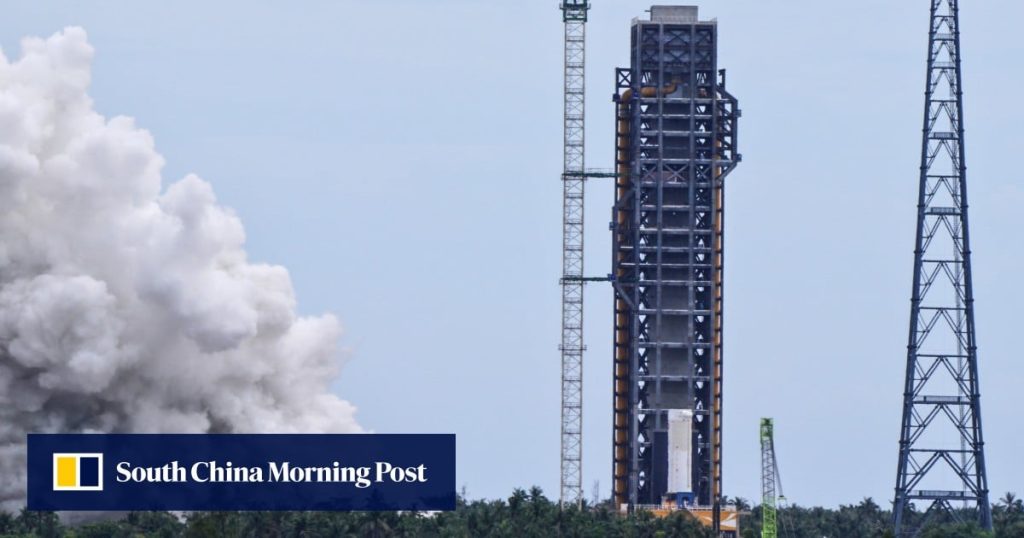A full-size first stage of the Long March-10 was fired for about 30 seconds at around 3pm on Friday at the Wenchang spaceport on Hainan Island, according to the China Manned Space Agency. Bolted to the ground, its seven YF-100K engines roared to life together, generating nearly 900 tonnes of thrust.
“The test confirmed the engines could run in sync under both normal and high-power conditions, and yielded a full set of data,” the agency said.
It also marked “another major milestone” in China’s crewed lunar programme, following recent tests of the Mengzhou spacecraft’s emergency escape system and the Lanyue lander’s landing-and-ascent sequence, according to the agency.
Standing 92 metres (302 feet) tall, the Long March-10 will lift off with a total of 21 YF-100K engines – seven on the first stage and seven on each of two boosters – giving it about three times the thrust of the Long March-5, China’s most powerful rocket today.
The superheavy launcher can deliver 27 tonnes to a trans-lunar orbit. Under current plans, two Long March-10 rockets will launch the crewed Mengzhou spacecraft and the Lanyue lander separately, with the two vehicles rendezvousing in lunar orbit ahead of a landing attempt by 2030.


